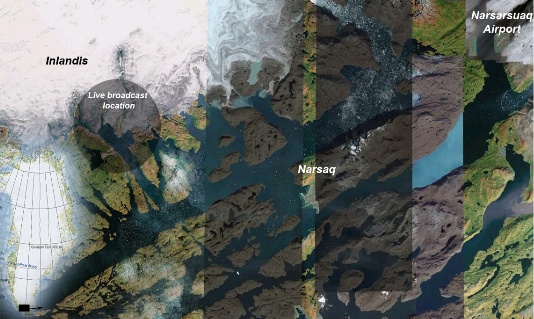The Northern Lights in Greenland are to broadcast live on Internet
A daily connection from the glacier Qaleraliq between 21 and 29 August will offer this wonderful show. The retransmission will be possible thanks to the collaboration of the Facultad de Informática of Universidad Politécnica de Madrid.
An expedition of scientists will observe the Northern Lights from southern Greenland in the surrounding of the glacier Qaleraliq (length = 46.6791 W, latitude = 60.9896 N ) from Sunday 21 August until 29 August. Observation of the Northern Lights will be broadcast live each of those days on the Internet at the same time, from 3.30 to 3.45, peninsular Spanish time, and from 23.30 to 23.45 local time in Greenland.
The scientific expedition is called Shelios 2011 and is coordinated by a researcher at the Instituto de Astrofisica de Canarias (IAC) Miquel Serra. The webcast is made possible by the collaboration of Professor of the Facultad de Informática of the Universidad Politécnica de Madrid, Francisco Sanchez, head of research group Cyclope..
The broadcast is part of the educational project called 'Astronomía Ciudadana' (Astronomy Citizen), of the FECYT (Spanish Foundation for Science and Technology) whose main aims is to introduce the 'Ciencia Ciudadana' (Citizen Science) in Spanish schools through astronomy. Promoting a culture of innovation with a project based on new technologies like Internet and robotic telescopes, as well as increase scientific vocations among youth. These aspects are the main goals to be achieved by this initiative.
 Auroras
Auroras
The wonderful sky show of the aurora is produced when energetic particles originated in the Sun (solar wind) reach the Earth's atmosphere. The entry of these particles is governed by the Earth's magnetic field; therefore, it can only penetrate the North Pole (Aurora Borealis) and South (Aurora Australis).
Auroras are formed by huge curtains of light that change rapidly. The emission of light occurs in lower atmosphere (100 to 400 km) and is due to shocks in the solar wind (mostly electrons) with oxygen atoms (greenish) or nitrogen molecules (red tones). Fuente: Shelios
There were intense auroras in 2000 coinciding with a period of maximum solar activity. The solar activity cycle is about 11 years and therefore at the beginning of 2012, when our sun king will have maximum activity, the aurora will again show an unusual beauty.
New period of maximum solar activity
According to the latest forecast the Sun will enter its 24th period of maximum activity by the end of 2011. Solar activity is defined by the number of sunspots detected on the surface of the sun, when we approach the peak period, the number of sunspots grows.
One consequence of the solar maximum is that the sun increases the emission of high-energy elementary particles (solar wind) which is known as solar storms. The main effects of solar maximum on Earth are:
1) Problems of interference in communication networks (terrestrial and satellites)
2) Possible power supply problems due to the influx of electrons to the surface.
3) Possible effects on Earth's climate.
4) Increase in the frequency and luminosity of the aurora
History of solar maximum
It is known that at solar maximum in 1989 during intense solar storms several cities in northern United States and Canada had serious problems in the power supply. Several satellites were temporary anomalies in the course of those storms.
The relationship between solar activity and Earth's climate is a subject of debate in recent years. There is evidence to suggest that during the solar activity minimum, the Earth suffers cooling.
It is believed that there was a prolonged solar minimum (the Maunder minimum) between 1645 and 1715 that caused a little ice age on Earth, with effects observed in Northern Europe.
Finally, there is an increase of the solar wind during solar maximum and increases the flow of elementary particles. When these particles reach the Earth are directed towards the magnetic poles causing, by interacting with Earth's atmosphere, the aurora borealis (northern hemisphere) and aurora australis (southern hemisphere).
The best area for viewing the Northern Lights is located in a circle around the north magnetic pole (between 60 and 70 degrees north latitude). Due to the magnetic north pole is located northwest of Greenland (not coincide with the geographic north pole), particularly in northeastern Canada Ellef Ringnes Island, southern Greenland is one of the best viewing platforms.

